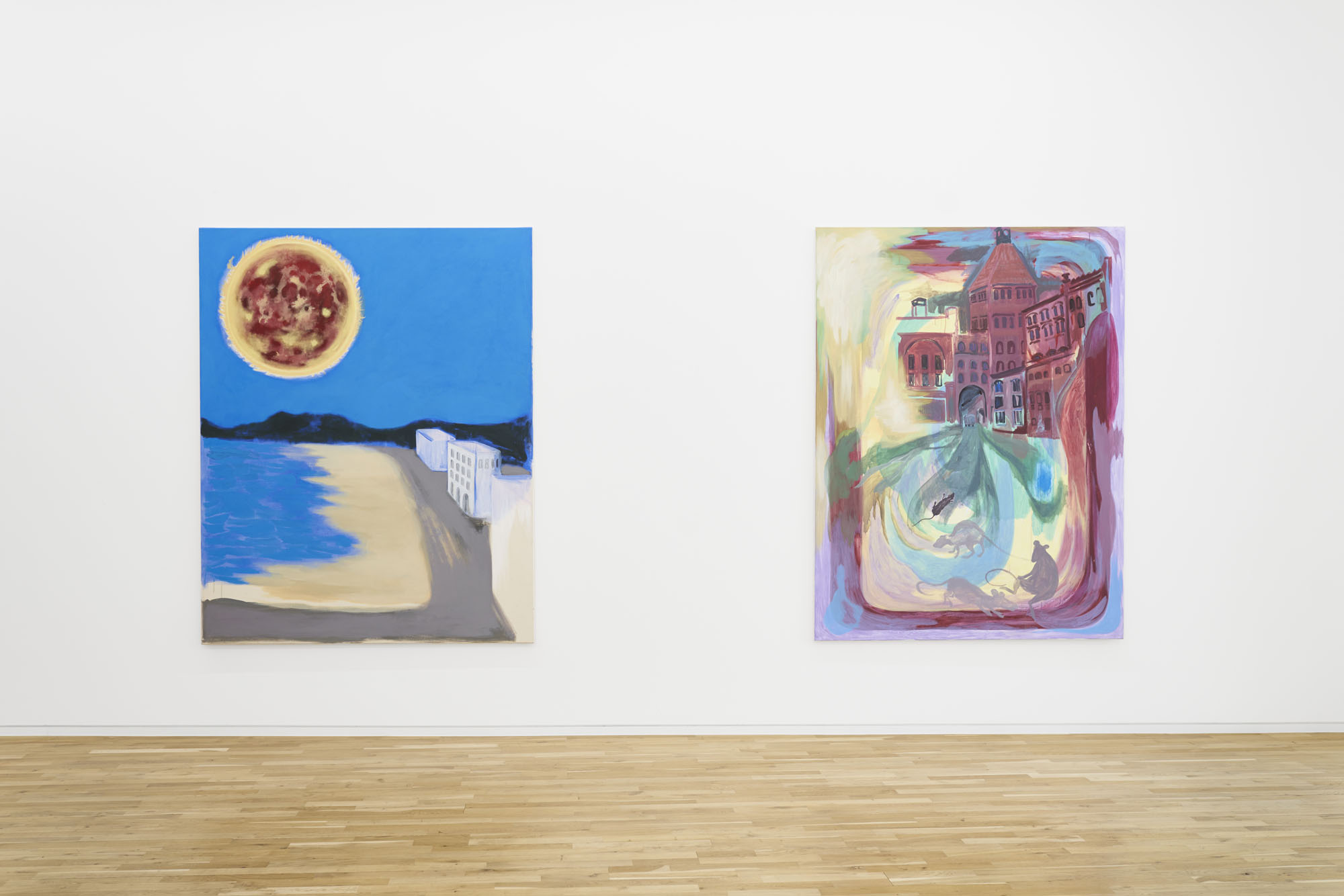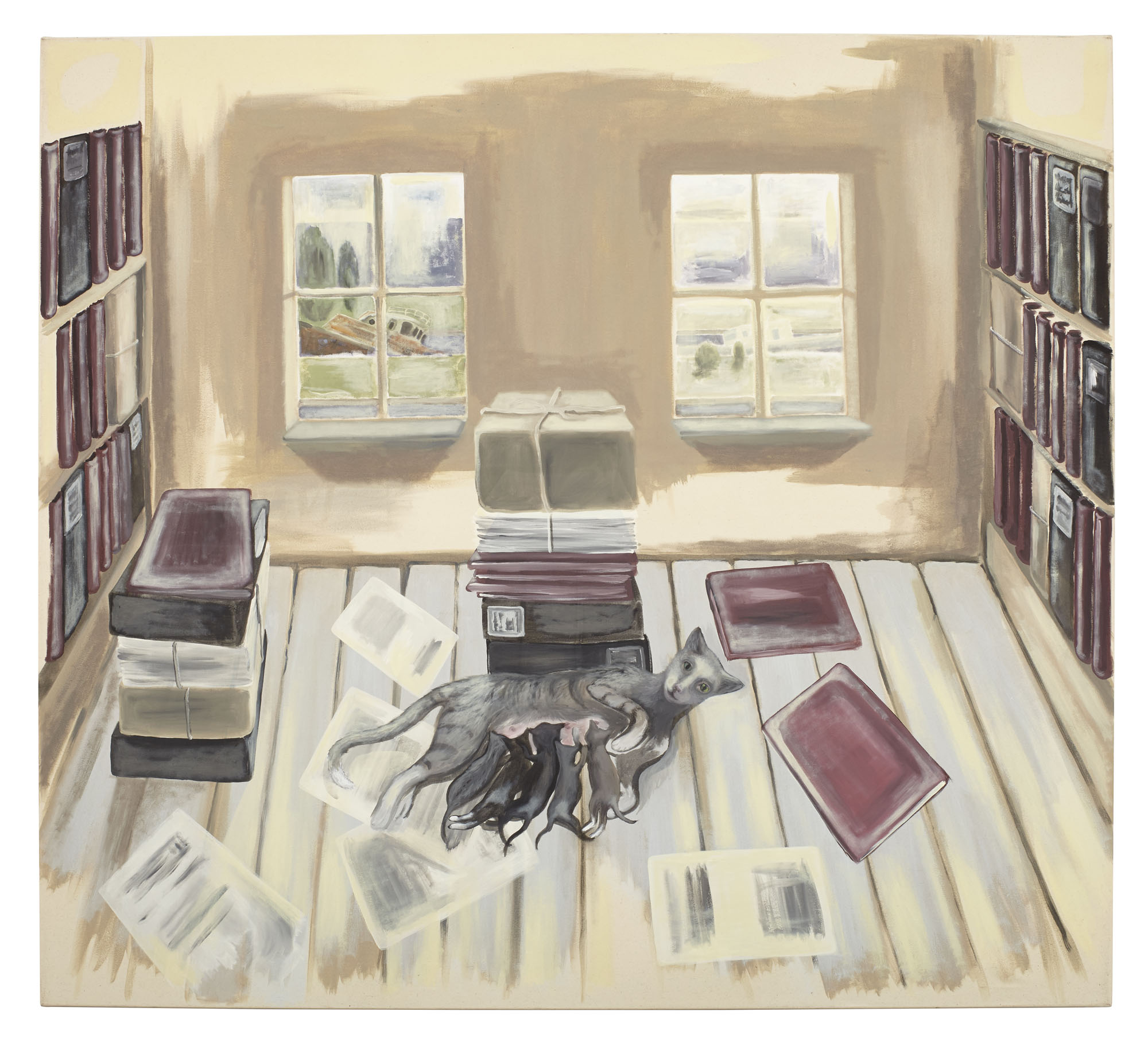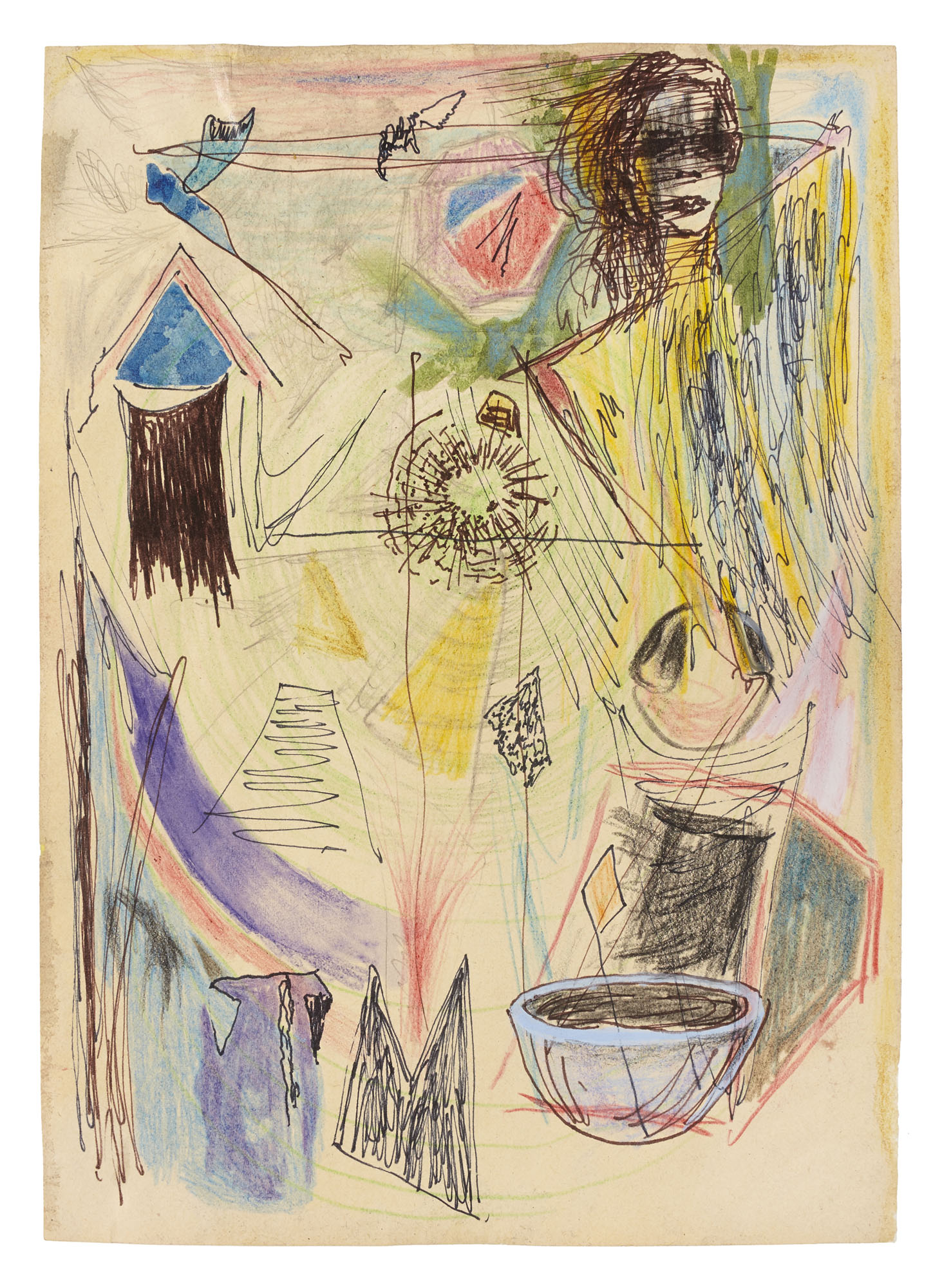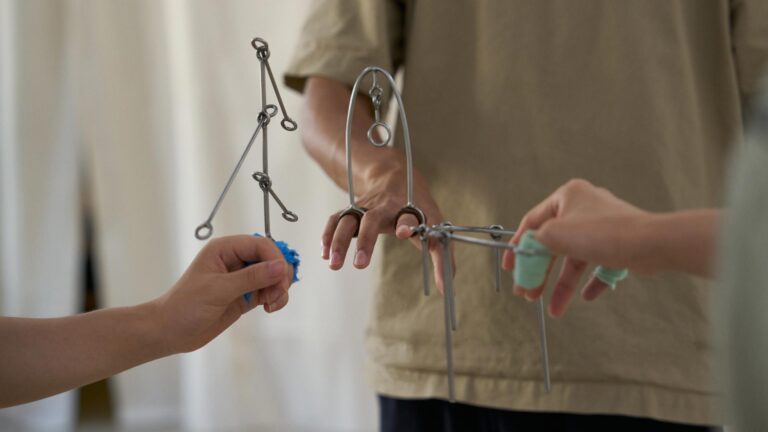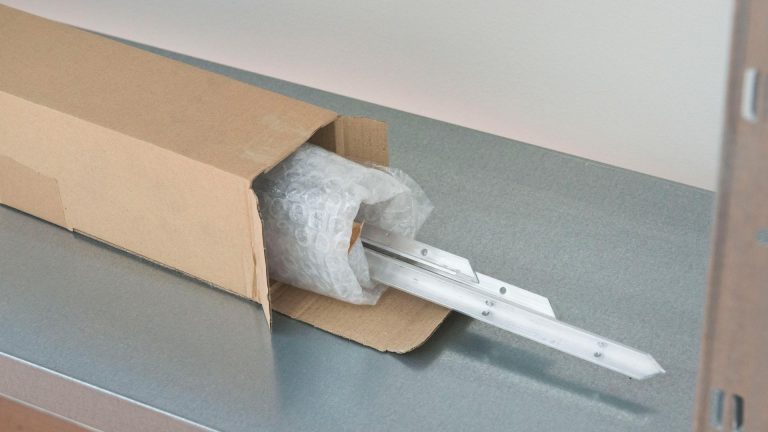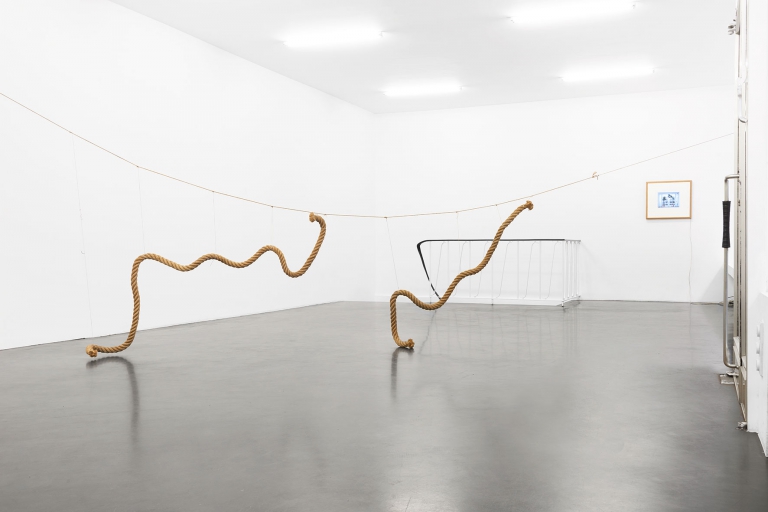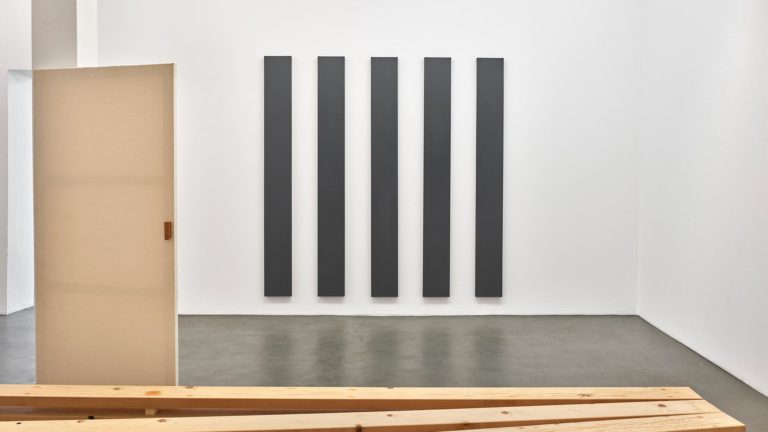Artist: Lutz Braun
Exhibition title: Im Licht der gehemmten und geleugneten Möglichkeiten
Venue: Jahn und Jahn, Munich, Germany
Date: July 5 – August 9, 2019
Photography: all images copyright and courtesy of the artist and Jahn und Jahn, Munich
When standing in Lutz Braun’s current solo show at Jahn und Jahn, both the image on his invitation card and the rather awkward title “Im Licht der gehemmten und geleugneten Möglichkeiten (In the light of arrested and denied possibilities)” feel misleading. But the suggestiveness of the image is not diminished by this, in fact the opposite occurs. It corresponds to a painting called Wolfsburg, recently made by Braun for the exhibition. This paining – a large, horizontal piece – presents a kind of puzzle which, in terms of form and content, can be understood firstly as following the tradition of the allegorical and, specifically, the emblematic. Secondly, according to the artist, this is an attempt at ‘political art’. Braun noted that the ‘political’ aspect could have dominated the exhibition and almost became its agenda.
In this painting, mystery, dissolution and the purpose of the whole enterprise seem to exist in a precarious relationship with one another. A stylized, yet clearly discernable painterly impression of the 1938 Wolfsburg Volkswagen factory, which has since become iconic, forms the head of a monumental wolf cowering from the right into the picture. It supports its brick-faced concrete and thus weighty head on a furry paw, which appears to show a protective or territorial gesture. The wolf’s large, staring blue eye is perfect here: hinting towards the famous company logo, which had to be urgently redesigned and is currently being reintroduced – objective: regain trust, no graphic frills. Meanwhile, the left paw lies parallel to what in the reality of Wolfsburg’s topography would be the Middleland Canal, lined with tracks, fences, and bad art.
The paw lies there so lifelessly that the fatigue it expresses is literally transferred to the painting to such an extent that by the middle of the wolf’s leg, painting stops and primed canvas is visible. In his composition, Braun isolates the car factory-cum-mammal with its characteristic, exaggerated smoking chimney from its environment and pushes it into the distance. In this way, we can study the VW-wolf-mutant from a safe distance as an image. We are not required to endure it as an nuisance made of brick, cement, and capitalist hubris that lingers on for minutes, like the passengers on the train from Berlin to Hanover regularly have to do, whether they like it or not.
The exhibition title – as Braun has explicitly pointed out – is a quote or rather a snippet from Herbert Marcuse’s classic One-Dimensional Man, first published in German in 1967. Marcuse, who is in fact a critical theorist, is in no danger of becoming popular, particularly not as a result of those looking to intellectually embellish their artistic projects. However, when art does turn to philosophy to add momentum, it is never without risk.
It is worth examining where exactly this snippet comes from. The passage from the introduction of One-Dimensional Man goes as follows: “In order to identify and define the possibilities of an optimal development, critical theory must abstract from the actual organization and utilization of society’s resources, and from the results of this organization and utilization. Such abstraction which refuses to accept the given universe of facts as the final context of validation, such ‘transcending’ analysis of the facts in the light of their arrested and denied possibilities, pertains to the very structure of social theory. It is opposed to all metaphysics by virtue of the rigorously historical character of the transcendence. The ‘possibilities’ must be within the reach of the respective society; they must be definable goals of practice. By the same token, the abstraction from the established institutions must be expressive of an actual tendency – that is, their transformation must be the real need of the underlying population.”
In this way, philosophically equipped, Lutz Braun’s exhibition can become a tool. More precisely, pictures like Wolfsburg or Oficina de migracion Buenos Aires 2009, which is completely different in the simplicity of its composition, depicting a cat feeding one of her kittens while looking impassively at the viewer, can be art and at the same time can, at the very least, become a tool for those who look with ‘real desire’ and thus consider the consequences neither as too exhausting nor too disappointing. There is something to discover in every corner, which could potentially reveal even more. But for very different reasons time is running out.
Hans-Jürgen Hafner (excerpt from exhibition text)
Lutz Braun, Im Licht der gehemmten und geleugneten Möglichkeiten, 2019, exhibition view, Jahn und Jahn, Munich
Lutz Braun, Im Licht der gehemmten und geleugneten Möglichkeiten, 2019, exhibition view, Jahn und Jahn, Munich
Lutz Braun, Im Licht der gehemmten und geleugneten Möglichkeiten, 2019, exhibition view, Jahn und Jahn, Munich
Lutz Braun, Im Licht der gehemmten und geleugneten Möglichkeiten, 2019, exhibition view, Jahn und Jahn, Munich
Lutz Braun, Im Licht der gehemmten und geleugneten Möglichkeiten, 2019, exhibition view, Jahn und Jahn, Munich
Lutz Braun, Im Licht der gehemmten und geleugneten Möglichkeiten, 2019, exhibition view, Jahn und Jahn, Munich
Lutz Braun, Im Licht der gehemmten und geleugneten Möglichkeiten, 2019, exhibition view, Jahn und Jahn, Munich
Lutz Braun, Im Licht der gehemmten und geleugneten Möglichkeiten, 2019, exhibition view, Jahn und Jahn, Munich
Lutz Braun, Im Licht der gehemmten und geleugneten Möglichkeiten, 2019, exhibition view, Jahn und Jahn, Munich
Lutz Braun, Im Licht der gehemmten und geleugneten Möglichkeiten, 2019, exhibition view, Jahn und Jahn, Munich
LUTZ BRAUN, Wolfsburg, acrylic on canvas, 170 x 190 cm
LUTZ BRAUN, Oficina de migracion Buenos Aires 2009, acrylic on canvas, 180 x 200 cm
LUTZ BRAUN, Dessau, acrylic on canvas, 200 x 150 cm
LUTZ BRAUN, Mountain, oil on canvas, 175 x 150 cm
LUTZ BRAUN, Solstickan, acrylic on canvas, 200 x 160 cm
LUTZ BRAUN, Ums Ganze, oil on canvas, 115 x 115 cm
LUTZ BRAUN, Invincibility, ink and pencil on paper, 29,7 x 21 cm
LUTZ BRAUN, fend country, colored pencil and ink on hemp paper, 29,7 x 21 cm





